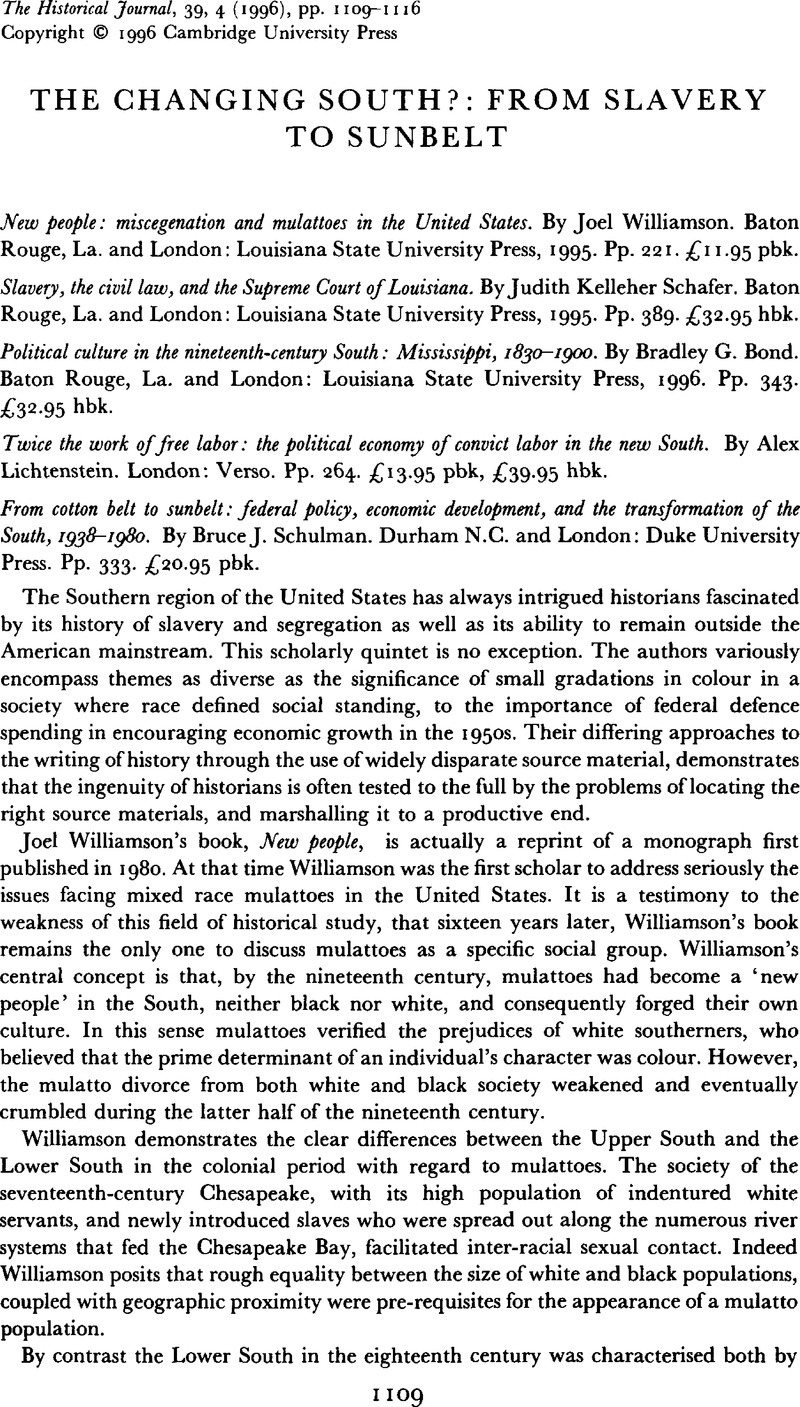No CrossRef data available.
Article contents
The changing South?: From slavery to sunbelt
Published online by Cambridge University Press: 11 February 2009
Abstract

- Type
- Review Articles
- Information
- Copyright
- Copyright © Cambridge University Press 1996
References
1 Several free mulattoes became slaveholders and enjoyed economic prosperity in the antebellum era. See for example Alexander, Adele Logan, Ambiguous lives: free women of color in rural Georgia, 1789–1879 (Fayetteville, AK., 1991)Google Scholar; Johnson, Michael P., & Roark, James L., Black masters: a free family of colour in the old South (New York, 1984)Google Scholar; Marina, Wikramanayake, A world in shadow, the free black in antebellum South Carolina (Columbia, S.C., 1973).Google Scholar
2 I am grateful to John David Smith of North Carolina State University for giving me permission to cite some of the arguments made from his new book, Black Judas: William Hannibal Thomas and ‘The American Negro’ that were presented to the American History Seminar Cambridge University on April 16, 1996.Google Scholar


